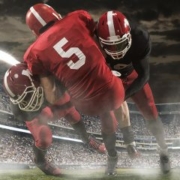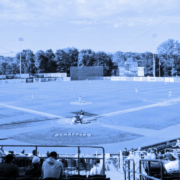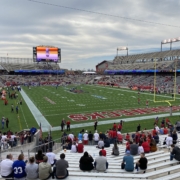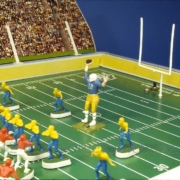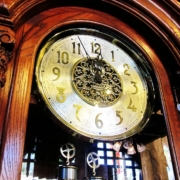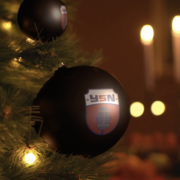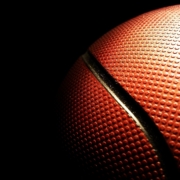GRIT CITY PIGSKIN PRO’S
By Scotty Mincher
Draft day is upon us once again, and at a time, in which we live, where the NFL draft has become a giant spectacle and a season of everlasting hope, especially for Browns fans like myself, I thought it would be fun to take a look at some of the local football products, that went on to make their dream of playing in the NFL become a reality. One of the more notable NFL players from Youngstown is former Jets’ receiver Brad Smith, who attended Chaney High School and went on to play Quarterback for Missouri. After being redshirted in 2001 he became the four-year starter (never missing a start) for the Missouri Tigers. His sophomore year, he established himself as a quarterback in college football, becoming only the second player in Division 1-A football history to ever pass for 2,000 yards and rush for 1,000. He received numerous national and Big 12 Conference freshman honors, leading the Tigers to a 5–7 record. His sophomore year, he led Missouri to an 8–5 record and their first bowl game since 1998. In 2004 the Tigers went a disappointing 5–6 after beginning the season ranked number 17 by the Associated Press. His senior year, he and the Tigers would bounce back, as he led the Tigers to a 7–5 record and his second Independence Bowl in three years and the first Missouri bowl victory in 7 years. Smith was working on his graduate degree in Economics at Missouri upon being drafted. He received his business degree from Missouri in May 2005. Smith has set numerous Missouri, Big 12, and Division 1-A records. Smith also excelled in the classroom and was named to the Big 12 All-Academic Team. He participated in the Mike Jones Football Clinic, Chancellor’s Lunch, Big Brothers and Big Sisters Bowl for Kids’ Sake, Student-Athlete Advisory Committee Food Drive, Truman Club, and Athletes-in-Action, among others. He was drafted in the 4th round of the 2006 NFL Draft by the New York Jets. He also played for the Buffalo Bills and Philadelphia Eagles. In 2018, when he returned home for his annual football camp Smith said he loves coming home to spread an important message. “Seeing them come back each year and seeing the emails, seeing them go to college and play in college, notes from the parents. You know, after the camp they saw a difference in their kid, a different level of commitment, treating people different, that is the whole goal. Football is going to end for everyone, sports is going to end, but what type of man, what type of young lady are you going to be for the rest of your life? That is what we want to get done here,” Smith said.
Youngstown is also the birthplace of fellow former NFL receiver and 2x Super Bowl champion David Givens. He was drafted by the New England Patriots in the seventh round of the 2002 NFL Draft. He played college football at Notre Dame, primarily as a running back.
Givens also played for the Tennessee Titans. Givens caught nine passes and one touchdown his rookie year for the New England Patriots in 2002 and improved in each of the next two seasons. He posted 34 catches and led his team with six touchdowns in 2003 and 56 catches in 2004 despite scoring just three times. The best performances in his career came in the postseason. Beginning with the 2003 AFC Championship Game against the Indianapolis Colts, Givens scored at least one touchdown the Patriots’ next seven playoff games, including both Super Bowl XXXVIII and Super Bowl XXXIX. In 2005, Givens caught a career-high 59 passes and was the Patriots’ number two receiver for the second year in a row. In Super Bowl XXXIX against the Philadelphia Eagles, Givens mocked the wing-flap celebration of Eagles receiver Terrell Owens after catching a four-yard touchdown from Tom Brady. Givens was the Patriots’ record holder in postseason touchdown receptions until 2015, before being surpassed by Rob Gronkowski who scored his eighth playoff touchdown against the Kansas City Chiefs in the Divisional Round of the NFL playoffs on January 20, 2016, and has the second-longest streak of consecutive postseason games with a touchdown reception, with seven. As we move along, We look at arguably the most famous running back to come out of the city of Youngstown in Maurice Clarett. Clarett played for the Ohio State Buckeyes football team. He also played professionally for the Omaha Nighthawks of the United Football League. During his freshman year at Ohio State University in 2002, he helped lead the Buckeyes to a national championship. In a widely unexpected move, Clarett was drafted on the first day of the 2005 NFL Draft with the final pick of the 3rd round (#101 overall) by the Denver Broncos. He is well known for unsuccessfully challenging the NFL‘s draft eligibility rules requiring a player to be three years removed from high school and for his tumultuous life outside of football, including his dismissal from Ohio State, several arrests, and imprisonment. Since his release, Clarett has become a celebrated public speaker across the country by speaking candidly about his previous struggles and successful recovery. Additionally, Clarett founded a successful behavioral health agency in both Youngstown and Columbus He also co-hosts Business and Biceps, a top-rated business podcast. In high school, After displaying his abilities as a freshman tailback on the Austintown-Fitch High School varsity team, Clarett transferred to Warren G. Harding High School and garnered national attention. When he graduated from Harding, national publications ranked him among the top 100 players nationally. He was a 2002 U.S. Army All-American. Clarett received an offer from Ohio State University and verbally committed to Ohio State over offers from Notre Dame, Fresno State, and the University of Miami. He formally committed to the Buckeyes in February 2002. Ohio State’s coach, Jim Tressel, had previously been coach of Clarett’s hometown Youngstown State Penguins. Later, Clarett received the USA Today Offensive High School Player of the Year and Parade All-American distinctions. Clarett started at Ohio State for one season, rushing for 1,237 yards (then a school record for a freshman) and scoring 18 touchdowns, which helped the Buckeyes to a 14–0 record and the 2002 BCS National Championship. He scored the winning touchdown against Miami with a five-yard run in the second overtime in the 2003 Fiesta Bowl. He also made a key defensive play in that game, stealing the ball on the Miami 28 from Hurricanes safety Sean Taylor, who was returning an interception from the end zone of a pass thrown by Craig Krenzel. After that play, Ohio State kicked a field goal, giving them a 10-point lead at the time. Clarett was the first freshman to be the leading rusher on a national championship team since Ahman Green of the University of Nebraska–Lincoln in 1995. Clarett signed a four-year contract with the Broncos on July 28, 2005. However, he was cut a month later and didn’t play a down in the NFL with the Broncos. As far as placekickers go, this story wouldn’t be right if I didn’t include Jeff Wilkins. Jeff Wilkins is a former American football placekicker for the San Francisco 49ers, Philadelphia Eagles and St. Louis Rams of the National Football League (NFL)With the Rams, he won Super Bowl XXXIV over the Tennessee Titans. He played college football for Youngstown State University. Wilkins is currently tied for second place all-time in most consecutive PATs without a miss at 371. He played for Austintown Fitch High School in the Austintown, Ohio suburb of Youngstown.At Youngstown State University, Wilkins made a school-record 66 field goals, with a long of 54 (a school record). While at Youngstown State, the Penguins won the 1991 and 1993 Division I-AA National Championships under future Ohio State head coach Jim Tressel. Wilkins was inducted in the YSU Sports Hall of Fame in 2003.Wilkins signed with the Philadelphia Eagles in 1994, but played in just six games and did not attempt a single field goal or extra point. The following season, he joined the 49ers. While he only played in seven games, he had a superb season, kicking 12 of 13 field goals. In 1996, he finally saw duty as his team’s full-time kicker and did not disappoint, kicking 30 of 34 field goals and all 40 extra-point attempts.In 1997, he joined the Rams, where he played the remainder of his career and became the team’s all-time leading scorer. Wilkins assisted his team to a championship win in Super Bowl XXXIV, kicking three of four field goals and two extra points in the Rams 23–16 win over the Tennessee Titans. He also kicked a 50-yard field goal in the Rams 20–17 loss in Super Bowl XXXVI.Wilkins was the last player to kick barefoot in the NFL, doing so for the first seven games of the 2002 season.In 2003, Wilkins kicked an NFL record-tying 39 field goals (then shared with former Miami Dolphins, New Orleans Saints, Seattle Seahawks and Chicago Bears kicker Olindo Mare), which stood until surpassed by Neil Rackers‘ 40 field goals in 2005. In St. Louis’ opening game of the 2006 season, Wilkins set a franchise record by kicking six field goals in their 18–10 win over the Denver Broncos. He also became the first Rams player ever to score over 1,000 points.On November 11, 2007, Wilkins kicked his 300th career field goal against the New Orleans Saints. Wilkins announced his retirement from the NFL on February 29, 2008. The YSU football program during Wilkins’s tenure featured many student-athletes from surrounding high schools. According to Wilkins, In an interview he did with thejambar.com, this led to a sense of community within Youngstown and the surrounding areas.”As I got there we just kinda took off,” Wilkins said. “Being able to play in front of your hometown community and seeing the crowds going from 2,000 to 5,000 to 10,000 to sold out as we were making those championship runs was great because you knew everyone in the area. … The people coming to the games were people I grew up with, so it was nice to be able to do that in your hometown.” Wilkins had this to say during the interview after being inducted into the Youngstown State University hall of fame in 2003. [It] means a lot because being from this area, playing on some great teams, and being recognized for some achievements … That’s what you want to do,” Wilkins said. “I think it’s just a blessing. Now, I sit back and think about it and go to the YSU games and relive all those memories from those days.” The final former football standout to go from all-American to the cream of the crop in the NFL is a guy we’ve highlighted a lot at YSN, that guy is Bernie Kosar. He’s probably the most famous Youngstown native to play in the NFL, But even his father Bernie Kosar Sr. didn’t see it coming.”In our wildest dreams, we never imagined this would happen,” said Bernie Kosar Sr. In a story for chicagotribune.com in 1988. ‘Bernie was a tall, gangly, uncoordinated kid,” former Boardman football coach Gene Pushic said. ”Everybody had doubts about Bernie because he looked so weird throwing the football,” Boardman offensive coordinator Jack Hay said. ”He throws sidearm and even to this day, he has no mobility.”
”Bernie was just one of the guys,” said Jim Glinatsis, a high school teammate and close friend of Kosar. ”Then, all of a sudden, we`re watching television and Bernie`s in the Orange Bowl, winning a national championship and being compared to Joe Namath. When you come from a small town and you see one of your best friends playing on television, it`s a big surprise.”
In the article, To explain how a slow-footed, sidearm quarterback has moved so quickly to success in the NFL, Kosar points to the people who have influenced him most:
his parents, Bernie and Geri; his high school football coaches, Pushic and Hay, and his youth league baseball coach, Mike Hamilton.
‘The hardest thing I ever had to do was leave my family and friends in Boardman (to go to Miami),” he said. ”But it turned out to be the best thing for me because it allowed me to come back here.”Kosar was born Nov. 25, 1963. Except for two years in Akron as a child, he lived in Boardman until he was 17. He attended Byzantine Catholic Central through 8th grade.
”He was an altar boy for me for many, many years,” Father John Ycobac of St. Mary`s Church said. ”He was a very sincere, very honest, very faithful boy. He was very close to his family. And he was always a straight-A student in our school.”
Kosar, who graduated 49th in a class of 478 at Boardman and earned a finance and economics degree in three years at Miami, said his interest in school was encouraged by his parents. ”They always told me that sports were fun, but education was more important.”
”In 1948, I was 10 and I was a big Indians fan,” said Bernie Sr. ”I can tell you game by game about the `48 season, when the Indians won the pennant. And two years later, the golden era of Browns football began with Otto Graham. My kids all heard a lot about Otto Graham.”Bernie Jr. had Browns and Indians posters on his bedroom wall, a Browns wastebasket in the corner, and a Brian Sipe jersey that he wore most of the time. However, it was obvious to his father that Bernie`s interest in sports was more than just as a fan. He wasn`t a dreamer, like most kids. He didn`t worship Sipe and other athletes; he studied them.
”When he was 10 or 11, I remember we were watching a basketball game on television,” his father said. ”Bernie saw a move he liked and went right out to the driveway and started practicing it. He did it over and over, 100 times until it was perfect. I remember watching him and thinking, `Gee, what makes a 10-year-old kid practice a move 100 times? Where does he get the patience?` ” Baseball was Kosar`s first love, and that`s where he met Hamilton.”He taught me a lot about winning,” Kosar said.
”I used to scout our opponents, taking notes in a notebook,” Hamilton said. ”Bernie always wanted to know what I was writing down. He would always sit next to me. Other kids would be horsing around, looking for girls, and Bernie would be studying a pitcher`s pickoff move because Bernie didn`t have a very good one and he wanted to learn. Or he`d be noticing something about the way a catcher positioned himself. He wanted to know everything.”Boardman was 6-0 before a teachers` strike ended Kosar`s junior season. The team was 9-2 in his senior year. He passed for 2,222 yards in a season and a half and was The Associated Press player of the year in Ohio as a senior.
- As I wrote in previous stories for YSN, Kosar went on to become, a National Champion (1983) A Heisman Trophy finalist (1984)
- A 2× Pro Bowl (1987, 1989) selection with the Cleveland Browns and a Super Bowl champion (XXVIII) with the Dallas Cowboys in 1994.
- As this story comes to a close, We give you 14 football players with Valley ties that were or are with NFL teams. This is as of August 19th, 2019. PITTSBURGH STEELERS: Kevin Radar – Youngstown State
- NEW ENGLAND PATRIOTS: Derek Rivers – Youngstown State, Damoun Patterson – Youngstown State, John Simon – Cardinal Mooney
- GREEN BAY PACKERS: Corey Linsley – Boardman, Darrin Hall – Austintown Fitch
- CINCINNATI BENGALS; Billy Price – Austintown Fitch
- INDIANAPOLIS COLTS; Malik Hooker – New Castle
- LOS ANGELES RAMS: Troy Hill – (Born In Youngstown), Vytas Hrynkiewicz – Youngstown State
- CHICAGO BEARS: James Daniels – Warren Harding, Danny Trevathan (Born in Youngstown)
- NEW YORK GIANTS: Avery Moss – Youngstown State
- DENVER BRONCOS: Derek Wolfe – Beaver Local High School
Most of these guys are still currently on NFL rosters. Derek Wolfe and Avery Moss have switched teams as Wolfe is with the Baltimore Ravens and Moss is with the Miami Dolphins. Also, Damoun Patterson’s most recent football ties are with the St. Louis Battlehawks of the XFL and the Hamilton Tiger-Cats of the Canadian Football League. Before that, Patterson had stints with the Pittsburgh Steelers and the New England Patriots. These guys and the former NFL players, I wrote about earlier are fine examples from a football, and in some cases an intellectual perspective for the rest of us and show us that if you want something bad enough and are willing to put in the hard work and make some sacrifices, the sky is the limit and nothing is impossible. Also, whether it’s because of something that they’ve done on or off the field they give the people of Youngstown and it’s surrounding areas, More specifically our sports fans something to duplicate, Or at the very least think about when we’re trying to achieve our goals!

